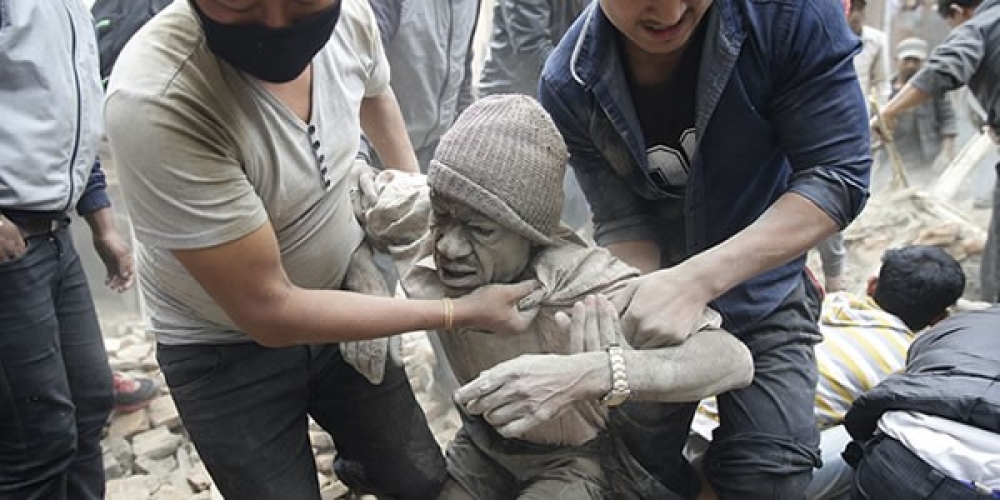Email marketing at a time of crisis
01 May 2015

The tragic events in Nepal, with thousands dead, tens of thousands injured and hundreds of thousands displaced, have created a common crisis for a wide variety of aid agencies and development charities, co-ordinated at UK level through DEC.
A crisis on this horrific scale offers an unusual opportunity to step back and appraise the way different charities choose to communicate in times of crisis.
We have compiled several examples of their charity emails at Charity Email Gallery.
Even without access to the email response data of the charities concerned, there are several things in these emails that clearly 'work' and that should be borne in mind by other Charities at other times.
1. Find rapid ways to establish trust
In times of crisis,what matters more than ever, is to know that money will reach recipients. in the mad scramble to put resources on the ground, effectively, the DEC brand itself becomes just as powerful as the individual charity brands.
This is particularly clear in the Care email where the DEC brand dominates the Care image. The emotional sense conveyed by the brand link is that the Care effort is contributory to a much wider effort. Instead of just using the DEC brand as an endorsing stamp of legitimacy, it allows that brand to dominate the visual communication and pulls the Care brand - perhaps less known tfor crisis response - along with it.
2. Urgency can be credible and is important
We are used to being told by charities that things are 'Urgent', and can become slightly inured to it, especially when accompanied by dense copy, or when received through communications channels that do not lend themselves to timely communication - like snail mail. However, in times of crisis, charities must find ways to send symbolic visual cues that do convey a genuine sense of urgency.
Of the earthquake emails we share on the Gallery, perhaps the Red Cross best illustrates this art. The narrative focuses on the urgent process of 'pulling people from the rubble'. The emotionally empathic image (which might benefit from captioning to give it more grit and authenticity) is of a single woman recovering from a building collapse. The language is crisp and focused on 'emergency' response and voiced by someone from the response team. The symbolic donation 'asks' are clear and specific; the donation option is relentlessly reinforced (no less than 6 times); and most emblematically, the visual design is not just overlayed with the rough text 'Urgent Appeal' but also introduced with text 'the next few hours are critical'. All of which are quite credible in the circumstances.
There are two jarring notes perhaps - the throwaway line: 'if you have already donated, thankyou' speaks to data-synching issues that sounds a dissonant note with an organisation working 'in the moment', and the invitations in the email to social media are generic ones around 'joining our network', which feels like a lethargic call to action by comparison with the importance of sharing the appeal with your networks, for example.
3. Practical action is what counts, not handwringing
Charities always face a choice between tugging at the heart strings with images of despair, and offering signs of hope, and ways to help.
In a disaster situation, what matters more than anything is to evoke a sense that something can actually be done; that money is not going to wasted; that things are happening.
The email from UNHCR shines out in this regard, quoting specific, concrete differences - e.g. delivering 11,000 plastic sheets - that the agency is making. Crucially, it shows an image of these resources being unloaded. The image would be better still if it had more local context; and those opening this email may have a lingering suspicion that this is a stock image, rather than a raw photo from the field - which would be perfectly achievable today, and greatly add to its drama. By contrast, the picture in the Care email, with its relevant caption, does give a clear sense of 'the drama of the situation' at hand, but by contrast it fails to portray the nature of the solution. To illustrate the point, the image below, taken from a later Christian Aid email, conveys a good fusion of 'problem and solution' and certainly resonated with this blogger.
4. It's still all about the personal connection
It's a truism of charity emails that a credible connection should be formed between the person in whose voice the email is written (and who ideally does initiate at least some of its text) and the person receiving it.
Thus the Care email comes from the 'Shelter Team Leader, who strives to humanise the situation with a reference to the need to 'get back to his team'. The Red Cross email similarly comes from the Nepal Emergency Response Team. Best of all, perhaps, is the Oxfam email, that uses testimony from an individual aid worker on the ground - Prabin Man Singh - to tell of him personally rescuing three people from the rubble.
A big 'fail' in this regard is the UNHCR email, which comes from 'The UNHCR Team' and despite explaining very significant heritage in the region, fails to communicate the relevance of this important backstory in terms of its capacity to help.
Finally, possibly the standout example of this personal connection is possibly the email from Tearfund, which although somewhat 'dry' still comes fairly close to being written in natural language and makes good use of a digital signature to further humanise the conversation.
5. Focus on a clear objective
What an email reader need to know most of all is what the money will secure. The Red Cross example is a great case study in focusing your communication on a single goal - getting people out of danger in this case. However this rubble-extraction goal will not last forever in an earthquake situation. The future challenges will be supplying water, sanitation and shelter.
Finding ways to simplify this sort of messaging, while respecting the complexity of what is actually needed, is a delicate balancing act. Oxfam does this well, by threading a consistently repeated message throughout its email to prioritise 'saving lives' 'urgently', 'fast' and in 'a race against time'.
6. Make it quick
The 'make it quick' rule doesn't always apply. Notably, Oxfam's email successfully uses quite a lengthy explanation of what is really going on - and this largely comes across as validation of its commitment and engagement in the region. Similarly, UNHCR uses a very copy-heavy email to communicate its own credibility in the Nepal region.
However, in general, the medium should reflect the message. This is an emergency, right? Time is of the essence? So the audience is entitled to expect that the communication will be short and to the point. The copy in Christian Aid's email may not be perfect at creating the necessary sense of crisis and suffering, but it was quickly assembled, and its cold factual tone is 'on brand' for the organisation concerned. It's a triumph of brevity.
To conclude, if there is a single lesson to take away from this quick tour around crisis communication, it's simply to be as authentic as possible.
The better a charity can assimilate and 'own' the communication principles it seeks to apply as part of its wider email strategy, the faster it will be able to mobilise with consistency and quality in response to crisis situations.


Please login to comment.
Comments